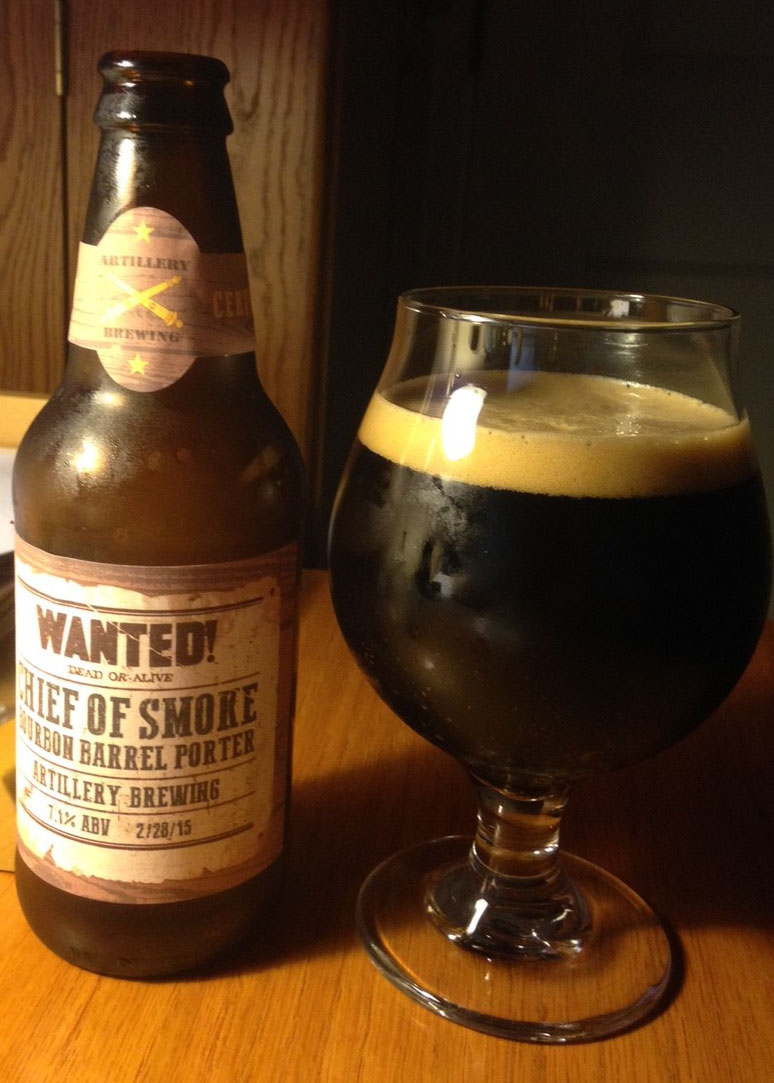OK. I designed this beer based on the following requirements/assumptions:
Assumption #1-- The Ingredients are listed on the GI website from greatest to least, but if two ingredients are used equally, they are placed in alphabetical order. This means I must have the following ingredients in the following order: Pale Malt, Munich, Chocolate, Caramel 60(n1), Roasted Barley, Debittered Black Malt. Now to look for ingredients that might be used equally.. Assuming the common convention is followed where things are listed in alphabetical order when used equally, Pale comes after Munich (alphabetically), so there's more Pale Malt than Munich (Otherwise they'd be listed in reverse order). And Munich comes after Chocolate (So there is probably more munich than chocolate, not equal amounts). And alphabetically, Chocolate comes after Caramel, so since Chocolate is listed first, there should definitely be more Chocolate malt than Caramel malt in this beer. It should be an actual quantitative difference, otherwise the order makes no sense (Caramel would be listed first). But then Caramel comes before Roasted Barley (alphabetically and on the ingredient list) so conceivably, those MIGHT be used at the same quantity. That's just a 50/50 coin flip though. Roasted barley could be quite a bit less. However, since this beer has a ton of sweetness, I have no fear whatsoever about adding too much bitter malt, so equal parts of Roasted Barley and Caramel it is! And then Roasted Barley comes after Debittered so there is a likely quantitative difference there as well. So basically, Roasted barley and caramel are the only two ingredients which might be used in equal parts in this recipe, and everything else follows a definite hierarchy of quantity (assuming the GI brewers know how to put things in alphabetical order and aren't trying to screw with us). So from here, and knowing the OG/FG, and the SRM's, it's just a logic problem to figure out possible percentages. So now off to Beersmith I go!!!!
Requirement #1-- I will not be able to fit 6 gallons of this beer into my 5 gallon MLT, therefore, I will be doing this partigyle-style and creating two 3 gallon batches, mashing twice. Each time, I will take the first runnings for the BCS, and use the second runnings for a session beer of some sort. Maybe even a "Baby Bourbon Stout".
Requirement #2-- Even with the double-batch method, I will still likely need some Extract to increase the SG. I will also have to be watering down my hydrometer sample in order to get a reading.
Assumption #2-- The munich malt must be in there for a reason. It's the second listed ingredient, after 2-row. With all this darkness and maltiness, what's a little munich malt going to do besides take away from diastatic power? In such a complex beer, why not just add a little extra 2 row and some crystal? What's the point? Well, I'm guessing they are using quite a bit of Munich Malt. Otherwise, why not just leave it out? I am hypothesizing that that is the challenge for the brewer... use as much (low diastatic munich) as you can while still getting good conversion.
Requirement #3-- When trying to figure out the recipe, let the grains guide you more than the SRM. This beer will be BLACK. Period. So assuming the Goose Island is brewing All-Grain, I will use the SRM information to help me zone in on the recipe formula. However, since I'm brewing Partial Mash for this (due to the huge grain bill), I'm going let the SRM calculation slide a bit as necessary to get closer to what I think the actual beer recipe should be.
To me, the grain bill seems kind of weird. First you have your base malt (high diastatic, that's normal). But then you have a malt that barely converts itself, followed by everything else that won't convert. Why? What's the purpose of that Munich malt? For a beer that has so much going on already, do you think they would they add "just a handful" of it? "Just for a subtle hint of character"? IMO That doesn't make sense in a beer like this. Especially given that it actually makes it harder to achieve the desired SRM because it adds almost nothing (relatively speaking) to the color. So I suspect that if you want to really nail down this recipe, here's what you need to do: While keeping the ingredients in their proper order, use the maximum amount of Munich and the minimum amount of 2 row. Now, I don't dare push the boundary too closely, after all this beer is going to age for at least 6 months or more! It'd be a shame to screw it up in the brewing process. So I will play it safe with an adequate amount of two row, but based on this theory, I will be using Munich LME.
Remember, this is a 3 gallon recipe. I will make it twice to fill the carboy. And I want to make as much as humanly possible, so I'll be affixing a blow off tube and crossing my fingers.
Ingredients Amount Item Type % or IBU
Batch Size: 3.00 gal
Boil Volume: 3.43 gal Boil Time: 60 min
Brewhouse Efficiency: 75.0 %
Ingredients Amount Item Type % or IBU
2.50 lb Munich Liquid Extract (8.0 SRM) Extract 17.2 %
4.50 lb Pale Malt (2 Row) US (2.0 SRM) Grain 31.0 %
2.25 lb Munich Malt (9.0 SRM) Grain 15.5 %
2.00 lb Chocolate Malt (350.0 SRM) Grain 13.8 %
1.50 lb Caramel/Crystal Malt - 60L (60.0 SRM) Grain 10.3 %
1.50 lb Roasted Barley (300.0 SRM) Grain 10.3 %
0.25 lb Black (Patent) Malt (500.0 SRM) Grain 1.7 %
4.00 oz Williamette [4.60%] (60 min) Hops 59.9 IBU
Beer Profile
Estimated Original Gravity: 1.129 SG (1.075-1.100 SG) Measured Original Gravity: 1.129 SG
Estimated Final Gravity: 1.032 SG (1.018-1.034 SG) Measured Final Gravity: 1.042 SG
Estimated Color: 101.7 SRM (30.0-45.0 SRM) Color [Color]
Bitterness: 59.9 IBU (50.0-95.0 IBU) Alpha Acid Units: 6.1 AAU
Estimated Alcohol by Volume: 12.9 % (8.0-13.0 %) Actual Alcohol by Volume: 11.5 %
Actual Calories: 635 cal/pint
And I'll probably substitute UK Styrian for the Williamette, since that seems to be what was used earlier in this beer's history.
n1. Currently, the website just states "Crystal" However in previous years they did specify C-60. And frankly, I've had over 10 years of this beer and sometime around 2005 to 2008 was the best, IMO.





